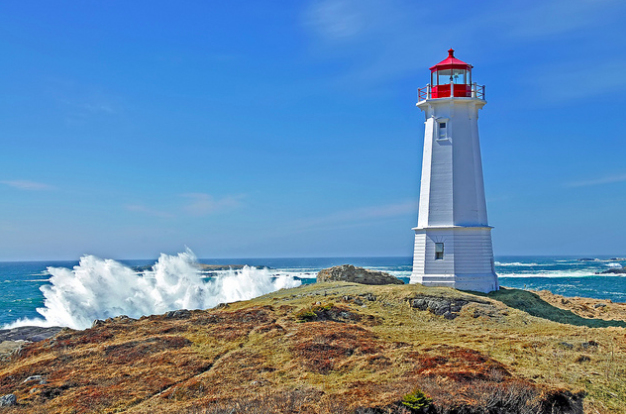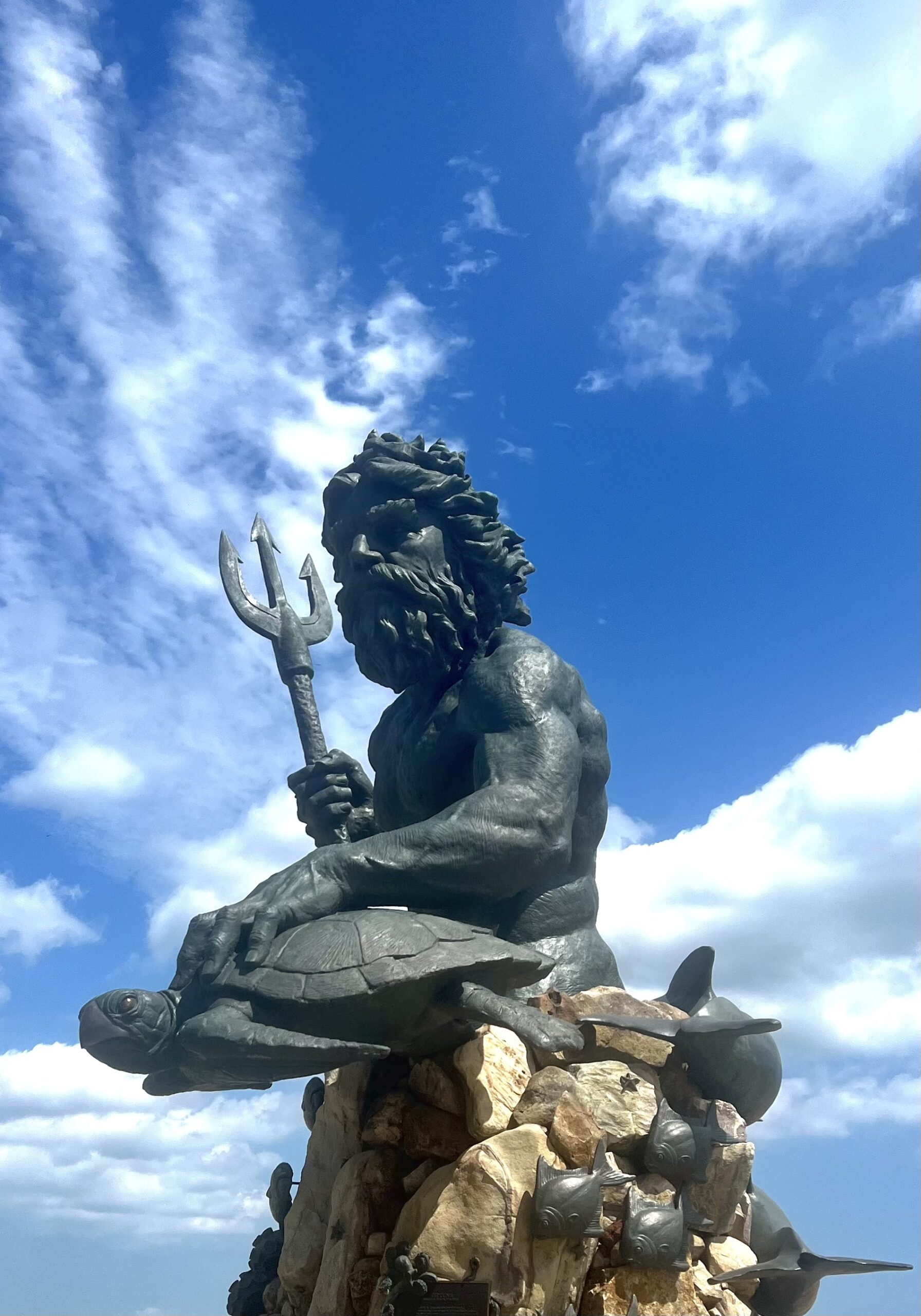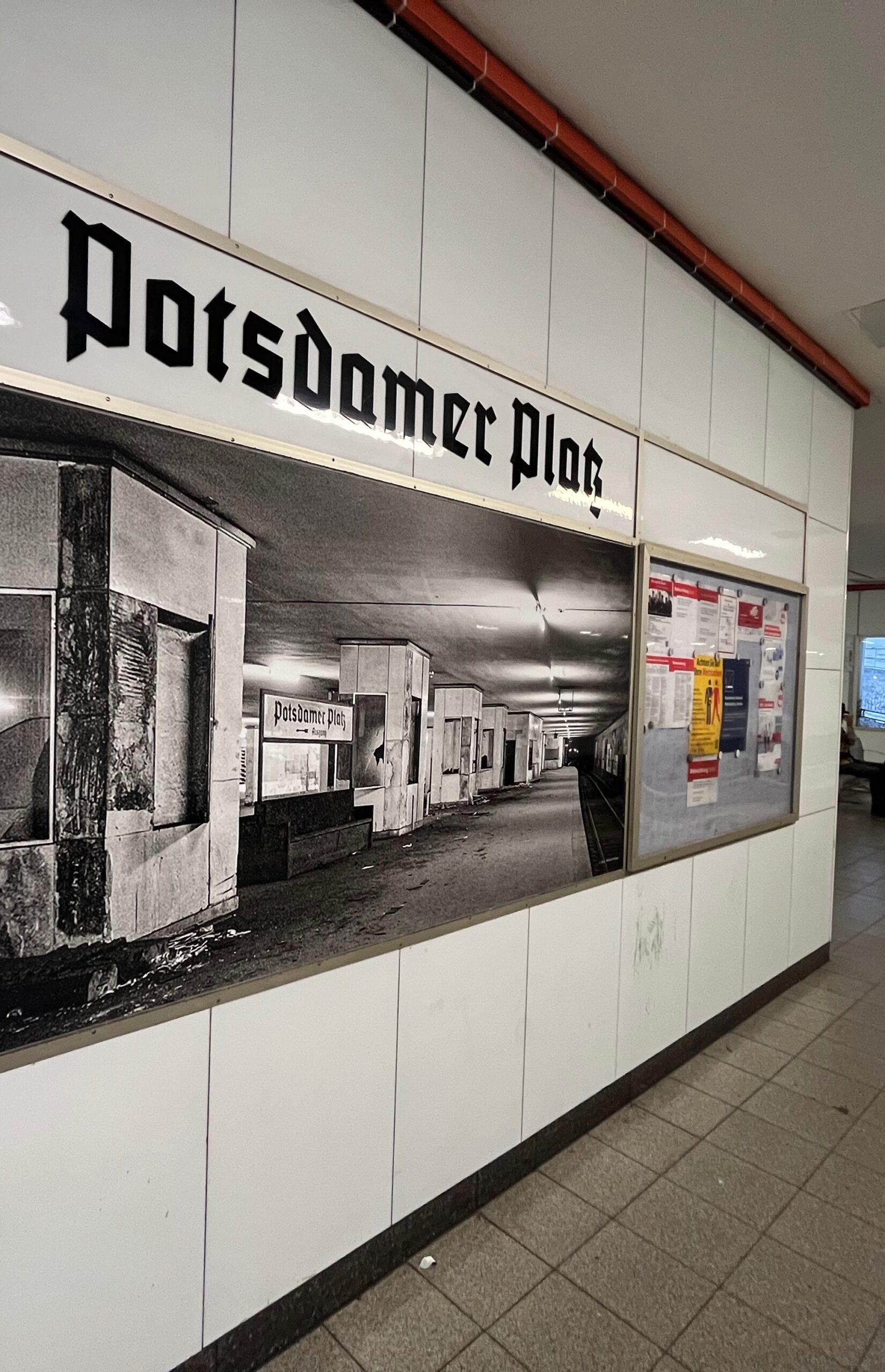Cape Hatteras Light
We visited the lighthouse on our honeymoon. Tallest in the U.S. It stood right on the sand, backdropped by surfers riding between wooden jetties built to keep the thin strip of beach from disappearing into the sea.
There were maybe fifteen people wandering the quiet grounds where the old keeper’s house had been turned into a museum and gift shop. We entered the lighthouse’s small door, and began the long climb up 268 spiraling stairs, mirroring the black and white candycane on the outside, to reach the rotating glass lens and the small walkway that hung 200 feet above the ocean. From there, we could see reef and rock and the black-winged shape of a ray gliding beneath breaking waves. We met no one on the way down and walked grinning to our car still bearing our wedding announcement in shoe polish.
This was in 1995, just before the New York Times discovered North Carolina’s Outer Banks, in all its retro charm, and New Yorkers decided it was worth driving eight hours to visit.
We didn’t return until 2004, this time with a toddler and an infant in tow. A few years before, the National Park Service relocated the Hatteras light to protect it from collapse. Rails were laid and the lighthouse jacked up and lifted onto the track so it could be moved from its perch on the beach to sturdier ground a half-mile inland. This was hailed as a technological feat even though a huge array of laser levels failed to keep the lighthouse positioned on its trolley, and in the end a man had to climb to the top and drop a plumb line.
We arrived to find there was now a per-person fee and a three-hour wait to climb to the top, while hundreds of people from all over the country crowded below to take pictures of a lighthouse surrounded by trees.
We left. Walked to the beach where the light had stood and sat on the ring of stones left to mark its former place, thinking they should have done nothing. Simply let the sea wash away the sand beneath it. We still would have come to wade out to its ruin.
Currituck Light
After the hurricane, the wind and current were too strong for swimming. On the day we’d arrived, the sand between the dune and the water was scattered with people—families with their children, retirees with their chairs and umbrellas, and the surfers attracted by an offshore break brought on by the approaching storm. The surfers came early in the morning and spent the entire day in the ocean, bobbing in the lineup, catching waves, sometimes riding them all the way to the shore where they would lie on the sand before paddling out again.
Now the beach was underwater.
The tides were so high, the foam touched the bottom of the dune. We tried walking along the edge, but the current was erratic and would come rushing in so fast that we struggled to stay on our feet.
Instead we drove twenty miles north along the coastal highway, through newer communities that had grown up in the last ten years as more and more people saw this once deserted stretch of beach as a real estate investment. Huge homes stood on stilts with tall curtainless windows revealing chandeliered dining rooms, while families that looked like those featured in department store picture frames rode uncracked sidewalks on matching bikes. In older towns like Nags Head, sand and sea oats and nettles were the only landscaping, but here lay perfectly manicured lawns, thick and green, dotted with sprinkler heads. It was as if someone had airlifted suburbia to these barrier islands.
The paved road ended at the town of Corolla, but a line of traffic consisting of four-wheel drives with tinted windows and racks of surf fishing rods continued along on the sand. On the unincorporated land running north to the Virginia border, there were said to be private beachfront mansions where wild horses roamed the dunes, descendants of Spanish stallions, washed ashore from shipwrecks 500 years before. But we never saw them.
Most lighthouses along this coast are some variation of black and white: Bodie Island’s broad horizontal stripes, Cape Lookout’s vertical diamonds, and then there’s famous Cape Hatteras with its candy-cane slants. But the Currituck lighthouse is unpainted, its redbrick slightly faded from sun and salt, looking as if someone had built a tall slender brick home with a black iron walkway around its uppermost rooms.
The wind was cool in the park around the lighthouse. Narrow concrete paths converged under low hanging magnolias and willows. Large pools of water gathered in the low places. A handful of people walked quietly about, reminding us of our honeymoon trip to Hatteras Light.
Inside the lighthouse, the humidity rose immensely. Placards along the spiral staircase told the thickness of the walls and how high we’d climbed. At the top, the door to the outer walkway was chained and padlocked shut because the wind was above 30 knots, so we held our boys up to the small window that faced the ocean, then started down again with their laughter echoing against the brick.
James Alan Gill has published fiction, non-fiction, and poetry in several journals including Colorado Review, Crab Orchard Review, Midwestern Gothic, Prime Number Magazine, and Atticus Review, and has work forthcoming in the anthology Being: What Makes A Man. He currently lives in Oregon.




